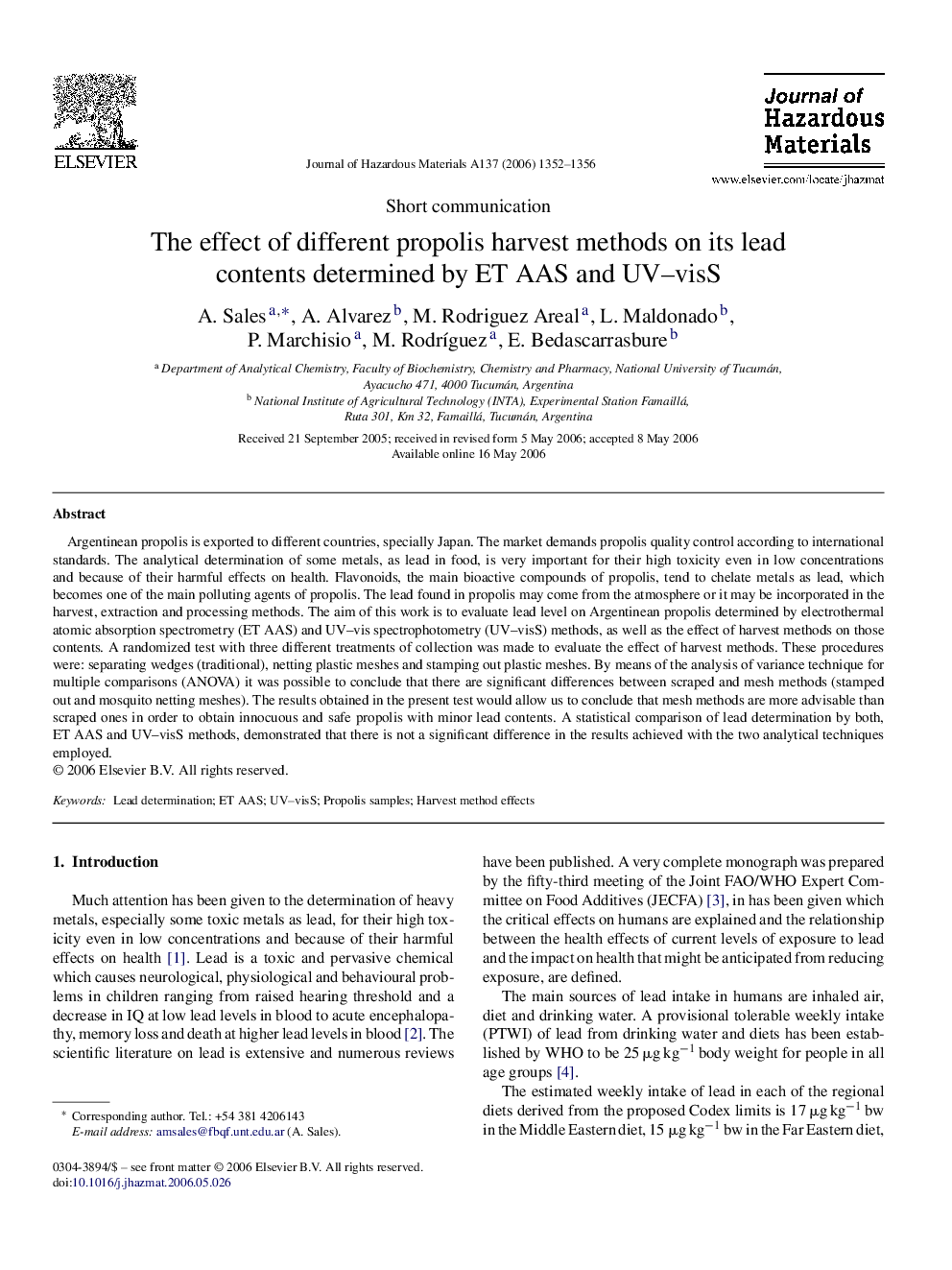| کد مقاله | کد نشریه | سال انتشار | مقاله انگلیسی | نسخه تمام متن |
|---|---|---|---|---|
| 585094 | 877906 | 2006 | 5 صفحه PDF | دانلود رایگان |
عنوان انگلیسی مقاله ISI
The effect of different propolis harvest methods on its lead contents determined by ET AAS and UV-visS
دانلود مقاله + سفارش ترجمه
دانلود مقاله ISI انگلیسی
رایگان برای ایرانیان
کلمات کلیدی
موضوعات مرتبط
مهندسی و علوم پایه
مهندسی شیمی
بهداشت و امنیت شیمی
پیش نمایش صفحه اول مقاله

چکیده انگلیسی
Argentinean propolis is exported to different countries, specially Japan. The market demands propolis quality control according to international standards. The analytical determination of some metals, as lead in food, is very important for their high toxicity even in low concentrations and because of their harmful effects on health. Flavonoids, the main bioactive compounds of propolis, tend to chelate metals as lead, which becomes one of the main polluting agents of propolis. The lead found in propolis may come from the atmosphere or it may be incorporated in the harvest, extraction and processing methods. The aim of this work is to evaluate lead level on Argentinean propolis determined by electrothermal atomic absorption spectrometry (ET AAS) and UV-vis spectrophotometry (UV-visS) methods, as well as the effect of harvest methods on those contents. A randomized test with three different treatments of collection was made to evaluate the effect of harvest methods. These procedures were: separating wedges (traditional), netting plastic meshes and stamping out plastic meshes. By means of the analysis of variance technique for multiple comparisons (ANOVA) it was possible to conclude that there are significant differences between scraped and mesh methods (stamped out and mosquito netting meshes). The results obtained in the present test would allow us to conclude that mesh methods are more advisable than scraped ones in order to obtain innocuous and safe propolis with minor lead contents. A statistical comparison of lead determination by both, ET AAS and UV-visS methods, demonstrated that there is not a significant difference in the results achieved with the two analytical techniques employed.
ناشر
Database: Elsevier - ScienceDirect (ساینس دایرکت)
Journal: Journal of Hazardous Materials - Volume 137, Issue 3, 11 October 2006, Pages 1352-1356
Journal: Journal of Hazardous Materials - Volume 137, Issue 3, 11 October 2006, Pages 1352-1356
نویسندگان
A. Sales, A. Alvarez, M. Rodriguez Areal, L. Maldonado, P. Marchisio, M. RodrÃguez, E. Bedascarrasbure,